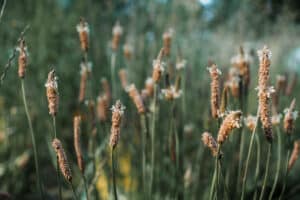Although the conventional approach to lowering cholesterol often includes medication, adopting a holistic perspective and taking a multifaceted approach can help you absolve the root of the problem and allay symptoms.
In today’s blog post, you’ll learn:
- What cholesterol is and the roles it plays in the body
- How high cholesterol impacts health
- The conventional versus herbal approach to addressing high cholesterol
- Critical herbal categories and herbs for lowering cholesterol
- How to eat for healthy cholesterol levels
Table of Contents
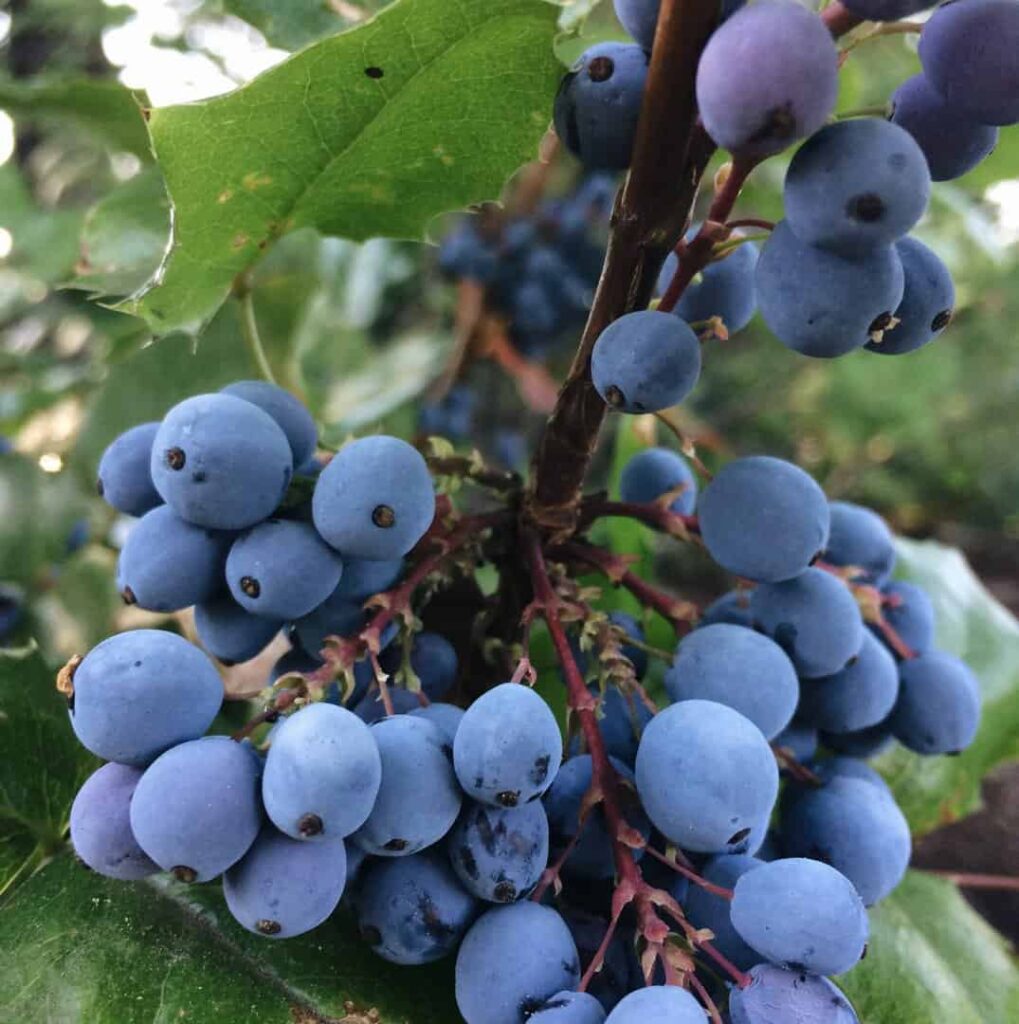
Have you ever gone to the doctor and were told you have high cholesterol?
If so, you might have felt a sense of dread wash over you, quickly followed by questions such as “What does this mean?” “What do I do now?” and “Do I need to start taking medication?”
With nearly 94 million U.S adults age twenty or older having high cholesterol, you’re certainly not alone in your experience.
Although there are standard protocols for lowering cholesterol, often focused on prescription medications, you can benefit far more by taking a holistic approach that addresses the root cause of this imbalance while simultaneously lowering cholesterol levels.
Sounds too good to be true?
Let’s break it down, starting with the basics.
What is Cholesterol, Anyway?
Cholesterol is a waxy type of lipid (fat) that’s found in all of the cells in your body.
There are two different types of cholesterol: low-density lipoprotein (LDL) and high-density lipoprotein (HDL). One way I like to think of the difference, is that LDL is low-density, therefore it’s light and fluffy, whereas HDL is high density, and therefore compact, tighter, and less “sticky.”
LDL cholesterol is responsible for transporting cholesterol from the liver to the rest of your body and is associated with an increased risk of cardiovascular disease. This is why it’s often referred to as “bad” cholesterol. This is because of its low density making it lighter, fluffier, and more sticky. Hence LDL tends to stick to the walls of your vasculature and lead to atherosclerosis.
HDL cholesterol, on the other hand, returns cholesterol to the liver from the rest of the body’s tissues and lowers the risk of cardiovascular disease, coining it “good cholesterol.” It in a way “cleans up” the vasculature.
If you have high HDL cholesterol, this is often a positive sign indicating good cardiovascular health. When your healthcare provider informs you that you have high cholesterol and are at an increased risk of cardiovascular disease, they are usually referring to high levels of LDL cholesterol.
Even though you need to be mindful of your cholesterol ranges, ideally maintaining low LDL and high HDL cholesterol, this lipid is responsible for a number of processes in the body that contribute to your health.

What Roles Does Cholesterol Play?
Cholesterol serves three main roles in the body.
It aids in the production of steroid-based sex hormones, such as testosterone and progesterone, it’s an essential component of cell membranes, preventing cells from rupturing, and it assists in the production of bile that occurs in the liver.
Aside from these functions, cholesterol must be present in order for your skin to produce vitamin D, which influences how the body uses calcium to maintain bone density, among many, many other things (in fact, Vitamin D isn’t really so much of a vitamin, in terms of how it works, it’s more of a hormone).
Because cholesterol is biosynthesized by animal cells, your body produces all of the cholesterol it needs and you do not need to supplement it further with food. Rather, the goal is to ensure that the foods you eat are low in saturated fats, which contribute to high LDL cholesterol, and to eat healthy monounsaturated or polyunsaturated fats to keep your HDL cholesterol levels up.
The key point here is that cholesterol is a critical component of our body for it to be healthy and functioning. Cholesterol isn’t really the bad guy we make it out to be, rather it is an indicator of something else going on at a deeper level. And one of the big ones here is inflammation, for the liver will send out LDL cholesterol to patch nicks in the vascular system that has become worn down from prolonged inflammation and oxidative stress. Technically speaking, high cholesterol is a vital response of the body, like a fever, it is an intelligent response to correct something, but when that intelligent response becomes excessive it can create problems of its own.
The Risks of High Cholesterol
Simply put, high cholesterol levels tax the cardiovascular system and if left unaddressed, can increase your risk of numerous cardiovascular diseases.
For example, high cholesterol can lead to atherosclerosis, a disease that occurs when plaque from cholesterol builds up inside of the arteries. This results in hardened and narrowed passages which can restrict blood flow, increase blood pressure, cause blood clots to develop, and lead to heart attack or stroke if left unaddressed.
High cholesterol can lead to damage to the aorta, kidneys, gut, and result in the formation of gallstones which can lead to infection in the gallbladder.
Although this might sound nerve-wracking, high cholesterol is something that is very manageable through diet, lifestyle, and herbs. With the right steps, you can lower your cholesterol levels and develop stronger cardiovascular health than before. And again, the most important thing to consider is not just reducing “bad” cholesterol, but looking deeper into what is causing the inflammation that is then leading to the elevating cholesterol. Work on that, and you’re well on your way to healing the root cause.
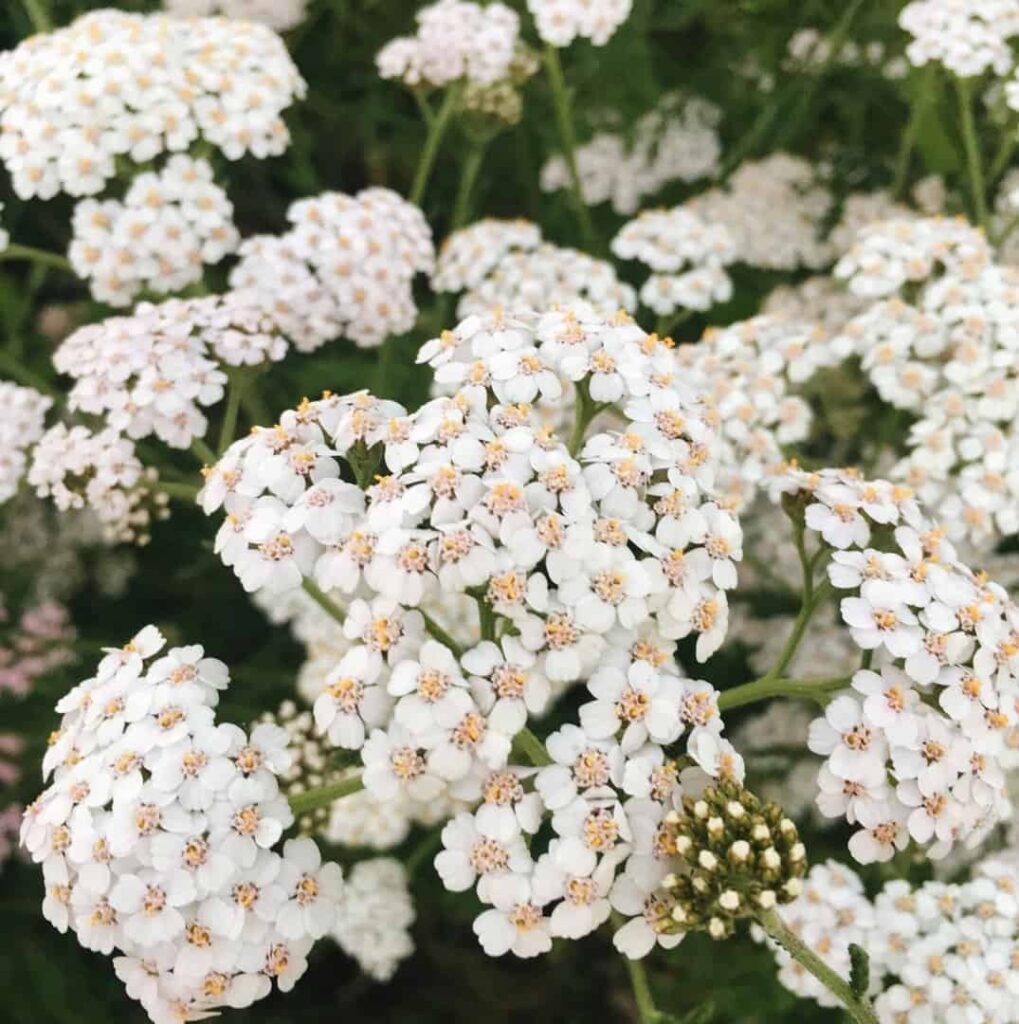
The Conventional Approach to Lowering Cholesterol
The standard medical approach to lowering cholesterol is usually by using a classification of drugs known as statins.
These medications lower cholesterol by reducing the rate at which the liver produces cholesterol.
Although it might seem like an easy way out of high cholesterol, there are a number of reasons why it’s beneficial to employ a holistic method rather than take a band-aid approach.
High cholesterol doesn’t develop in a vacuum. Although some folks may experience a genetic predisposition, it can also develop from consuming a diet rich in saturated fats as well as high inflammation.
Although you might not link high inflammation with elevated cholesterol levels, high inflammatory loads can result in nicks or scrapes of the vessel walls. In a healing response, the liver directs LDL cholesterol to cluster around the wound and heal the region. This is why lowering inflammation levels should always be a factor considered when your goal is to lower cholesterol.
By using statins, you can lower cholesterol levels. However, without addressing the root cause, you won’t be absolving the source that caused your cholesterol levels to rise in the first place. Moreover, many folks experience numerous side effects from cholesterol-lowering medications that generate a dependency, increase other medication intakes to ameliorate side effects, and have adverse cardiovascular effects after going off the medication.
Instead of putting some tape over a leaking pipe, why not address the problem at its source by considering why your cholesterol levels may be high to begin with? Through this lens you can determine what approach you need to balance your cholesterol levels and promote strong cardiovascular health.
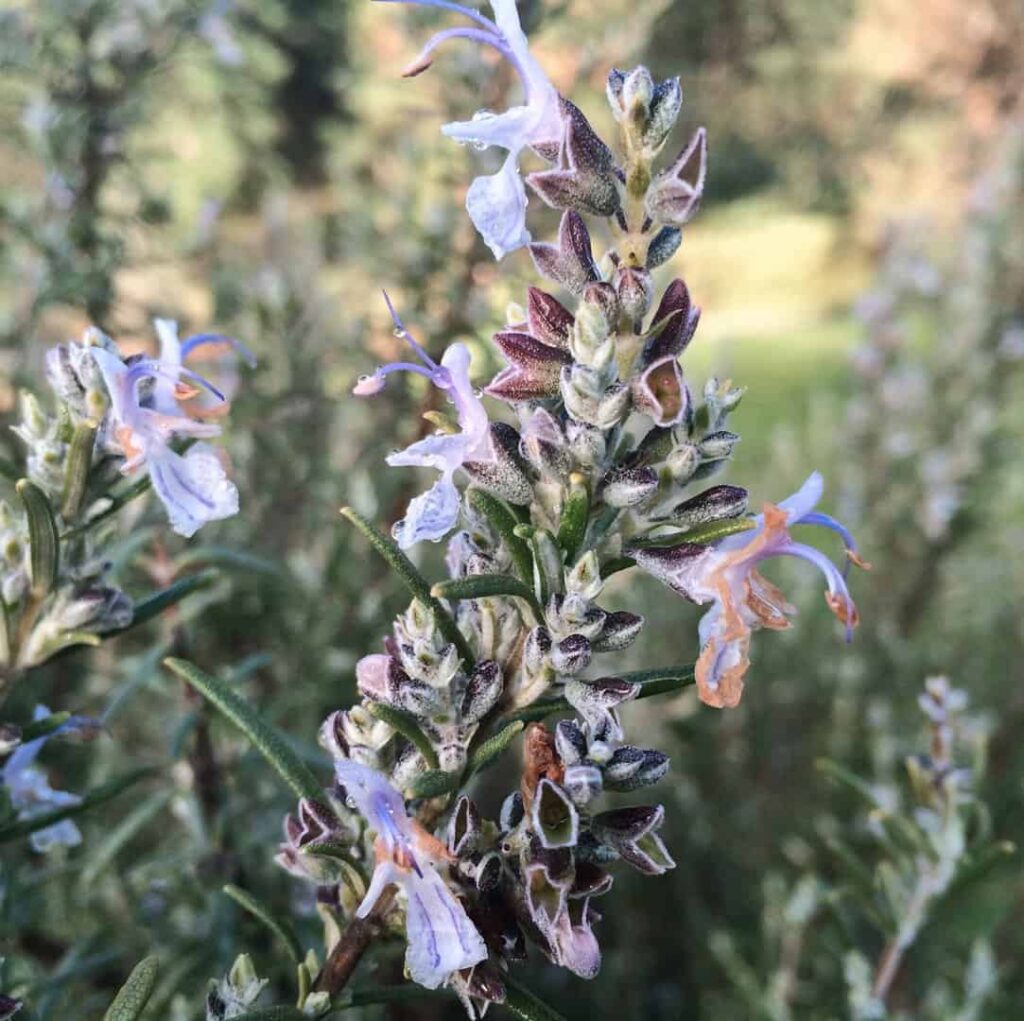
The Herbal Approach to Lowering Cholesterol
When using herbs to lower cholesterol, it’s best to create a blend using different types of herbs and actions to ensure that you’re targeting this imbalance from multiple angles.
The first step in managing high cholesterol is by reducing inflammation. This might look like eliminating foods you have intolerances to, taking more time to relax and lower stress (which affects inflammation to an extent), getting adequate and appropriate exercise, or consuming antioxidant-rich foods. Certainly there’s a lot of plants that reduce inflammation in various organ systems of the body. As cholesterol tends to be a response to inflammation in the vasculature, those herbs that attend to the circulatory system are best, such as Yarrow (Achillea millefolium), Rosemary (Rosmarinus officinalis), Garlic (Allium sativa), and of course our classic Hawthorn (Crataegus monogyna).
The next step is to use herbs that increase circulation. Circulatory tonic and stimulant herbs are fantastic as they open the blood vessels and encourage healthy blood flow. Some herbs that fall within this category include Ginger (Zingiber officinale), Cayenne (Capsicum annuum), Black Pepper (Piper nigrum), and other pungent warming herbs.
Because chai tea consumes many warming and circulatory herbs, a simple way to add these herbs into your routine is by enjoying a daily cup of hot chai.
Vascular tonics assist in strengthening and repairing cardiovascular tissue, making them a phenomenal addition to your herbal blend to take alone. Some examples include Hawthorn (Crataegus spp.), Yarrow (Achillea millefolium), and Horse Chestnut (Aesculus hippocastanum). If blood pressure is a concern, including vasodilator herbs such as Garlic (Allium sativum) and Ginkgo (Ginkgo biloba) can assist in lowering high blood pressure.
Lastly, bitter alterative herbs, such as Dandelion root (Taraxacum officinale), Burdock root (Arctium lappa), Gentian (Gentiana lutea), and Oregon grape root (Mahonia aquifolium), assist in lowering cholesterol levels by encouraging the production of bile and influencing liver metabolism. Indeed the bitter herbs are some of the key remedies for reducing high cholesterol.
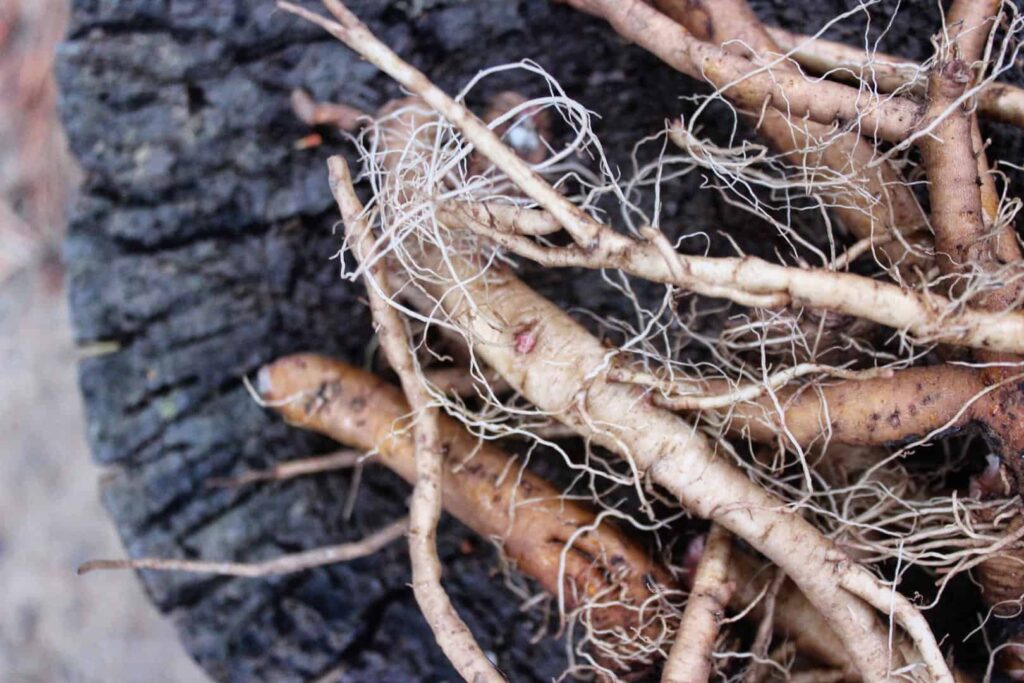
What Does Bile Have to Do With It?
You might be wondering what the connection between bile and cholesterol is, and the answer is a lot.
Bile is a digestive fluid that is produced by the liver and stored in the gallbladder. Consisting mainly of cholesterol, it also comprises bile salts, bilirubin (a breakdown product of red blood cells), and other components.
Bile has three main functions: To absorb fat-soluble vitamins, to digest fats by breaking them down into fatty acids for reabsorption through the digestive tract, and to remove toxins and metabolic waste, such as cholesterol.
Around ninety-five percent of your bile acids are reabsorbed in the ileum, which is the last part of the small intestine, rather than being eliminated via excretion. Because bile consists largely of cholesterol, you can lower your cholesterol levels by increasing your elimination of bile.
Increasing bile elimination can be accomplished through one simple practice: Eating more soluble fiber.
When you consume fibrous foods, the fiber binds to bile salts and carries them throughout the digestive and elimination pathways. Through this method, you can reduce your cholesterol levels healthily and strategically.
Looking at Your Plate
No holistic method would be complete without looking at your diet.
Because high levels of inflammation are positively correlated to high cholesterol levels, the first step towards improving your diet to lower cholesterol is to reduce or eliminate the foods that generate an inflammatory response.
Next, it’s important to consume a diet rich in plant foods, as these are often highly anti-inflammatory due to their antioxidant and flavonoid content.
Some foods that are especially rich in flavonoids include berries, citrus fruit, green tea, leafy greens, cruciferous vegetables, and allium vegetables such as garlic, onions, leeks, scallions, and shallots.
When adding fats to your plate, optimize your intake of polyunsaturated fats and monounsaturated fats. These fats raise protective HDL cholesterol without raising LDL cholesterol.
Some examples of monounsaturated and polyunsaturated fats include avocado, tahini, olives, chia seeds, hemp seeds, cacao nibs, and nuts. As you might notice, these fats are often found in whole plant foods.
In addition, it’s good practice to reduce your intake of saturated fats, which are most present in animal protein. In particular, dairy, processed meats, and foods containing lard.
Plant foods, especially lentils, beans, and oats are also exceptional sources of fiber. Oats is one of the primary fiber rich foods that are used to lower cholesterol due to its ability to bind to bile exceptionally well. Simply adding a cup full of beans to your vegetable can go a long way towards increasing your fiber intake while increasing satiety and lowering cholesterol through bile elimination.
The Heart of the Matter
Hearing that you have high cholesterol can feel scary at first. However, it can also be an invitation to take better care of your health and develop new habits that contribute to your mental, emotional, and physical wellbeing.
With this outlook, eating new foods and exploring different herbs can feel fulfilling as you pave your way towards increased energy, health, and vitality.
Whether you choose to implement one new practice or several at the same time, take it step by step and follow the pace of your heart towards a healthier you.
The information we’re sharing is for educational purposes and isn’t intended to diagnose, treat or cure any diseases. Each person is unique, therefore this herb or the information we’re sharing may not be suitable for you. Before taking herbs, be sure to correctly identify the plant you’re ingesting, research any herb/drug interactions that may be pertinent to you or consult a qualified herbalist or healthcare provider.





